« January 2007 |
Main
| March 2007 »
Mashing books' content with Google Earth & Geodata
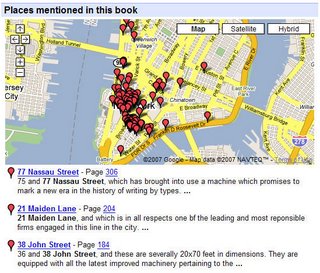
-
Google announced a couple of weeks ago that they wanted to map book's locations into Google Earth. As explained by David Petrou, a software engineer, on Inside Google Book Search blog.
Posted by patrick keller at 14:35
Jared Diamond
While I'm speaking about Philippe Rahm's works, I take the opportunity to mention a writer and book he was speaking about during the workshop he led for Variable_environment/ at ECAL/Ra&D last June 2006.

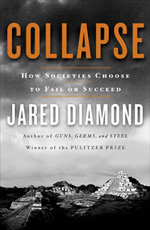
-
Jared Diamond, an American evolutionary biologist who wrote books about the evolution (Guns, Germs, and Steel (1997)) and collapse (Collapse: How Societies Choose to Fail or Succeed (2005)) of great civilizations under a climatic point of view. He claims that "ecological factors account for the development of civilizations and technologies" or examines "what caused some of the great civilizations of the past to collapse into ruin and considers what contemporary society can learn from their fates".
Posted by patrick keller at 12:02
Hormonorium vs. reduced oxygen content in the house
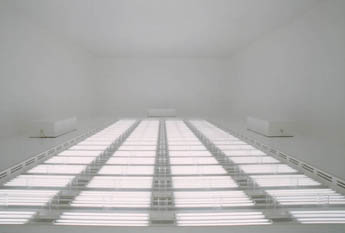
-
In 2002 for the Venice Biennial of Architecture, Philippe Rahm (see Workshop#3) produced the Hormonorium with his former partner Jean-Gilles Décosterd. The space was about a climatic and light displacement, bringing high moutain conditions (10'000 lux glacier bright light and reduced quantity of oxygen) into the chocking atmosphere of the laguna.

-
I just saw the previous images on BLDG about a functional training environment with the following comment.
It doesn't tool so long to see Rahm's architectural fiction come into "everyday"'s life (in a very functional and applied way unfortunately).
Posted by patrick keller at 11:45
Pixelnotes by Duncan Wilson
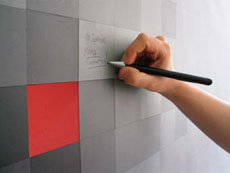
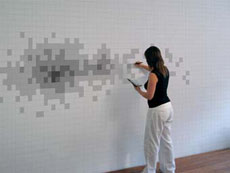
-
A project that has already been published several times in magazines. But well, yes, this is another way to produce a "variable environment" wallpaper, an "analog" way...
Read more on Duncan Wilson's website.
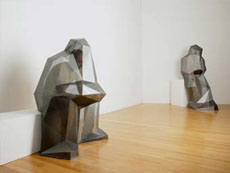
-
Take a look also to the PSP personal environments / furnitures he did in collaboration with other students at the RCA.
Posted by patrick keller at 17:13
Electrifying the alphabet (back to the 60ies)

-
Volume 62 of the english graphic design magazine Eye countains an essay written by Sarah Owens about *Electrifying the alphabet*. This is history now and it brings us back into the 60ies, but it is interesting to read an article about a time when typographers were dealing with such experimental design questions as to make a typeface become readable by a machine or by both a machine and a human... --Thimoty Epps did a trial in this direction back in 1969, see eye_51_s.jpg below--). We all know now how useful this has revealed to be!
So this was the time of OCR (Optical Character Recognition) and MICR (Magnetic Ink Character Recognition --i.e. E13B, commissioned by the American Bankers, that was used and still is on cheques) technologies. But also such types as the OCR-A in 1966 or then OCR-B designed by Adrien Frutiger in 1969.
Even if not at the same level at all, I can see a thematic continuity between all those efforts of the 60ies and what we've tried to do during this project, with pattern designs & objects dedicated to be recognised by (web)camera, computers and softwares (XjARToolkit).
Finally, Sarah Owens ends her essay that way:
"[...]
Symbols of a new modernity
Electronic alphabets were very much a product of their time, heralding a new age of electronically controlled communication, symbols of a new modernity. As results of both technological innovation and successful collaborations between engineers and design fields, they inspired and helped to advance typography into a new age: contemporary screen typefaces would be unimaginable without them. Perhaps it is now time for contemporary experimental typography to make a similar, lasting contribution."
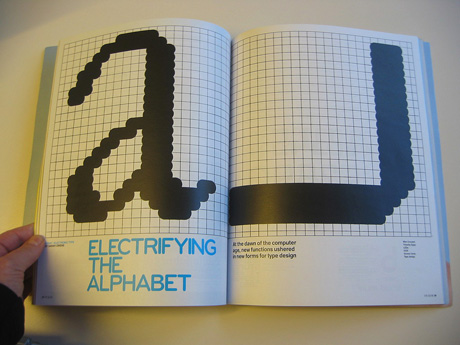
-
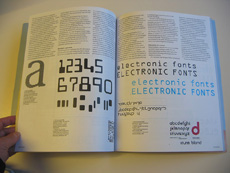

-

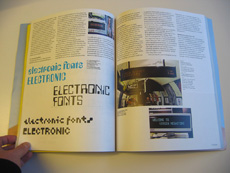
Posted by patrick keller at 16:36
Powder RFID
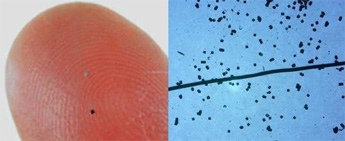
-
Christian Babski just sent me this link to the french gizmodo weblog: rfids that are small enough to look like powder... and be dissolved everyware...
Read more about it on MIT Technology Review.
Posted by patrick keller at 14:10
Everyware
Christophe Guignard sent me last november (...) this link to an online retranscription of a discussion between Adam Greenfield and Christina Ray. They talk about "Ubiquitous Computing", more precisely about the book "Everyware: The Dawning Age of Ubiquitous Computing".
As a theme, "ubiquitous computing" is in close relationship with the situation we tried to point out as a starting point of this project back in spring 2005. We then focused on what could be designed within/for such an environment, trying to unfold its hidden potential and eventualy (probably) ending up with problematic objects or environments (webcamera/mirrors and tracking softwares for your home or visual environments and products for camera and softwares), or objects that ask questions, some could be ethical.
Within their discussion, Adam Greenfield precisely rises some questions about "morality" and responsability for the ones who will produce designs for these "unbiquitous environments".
-
The discussion starts like this:
"Interview with Adam Greenfield
by Christina Ray
I recently met up with Adam Greenfield, author of Everyware: The
Dawning Age of Ubiquitous Computing, to discuss the book's ideas over
coffee. Everyware was published in 2006 and draws upon Adam's
background as a user experience consultant and critical futurist to
describe the subtle yet persistent diffusion of computing technology
into the landscape. Against the espresso machine hum, the cafe's iPod
shuffling through indie rock tunes, and the register jingle, we
talked about speed and convenience as the seductions that drive our
increasingly mediated reality. And we pondered the cultural,
ecological, and ethical costs of living with everyware and where we
go from here . (...)"
and you can read the rest of their chat HERE.
-
Since last november, another interview of Adam Greenfield about his book by Régine Debatty and Nicolas Nova was also published on WMMNA and on Pasta & Vinegar.
-
On this same blog, there was yesterday a post about ubiquitous computing (review of talks given during Lift07 conference).
Posted by patrick keller at 11:35












